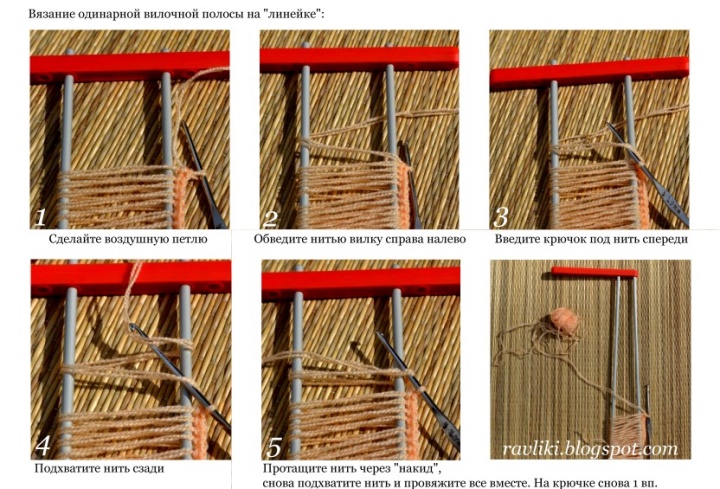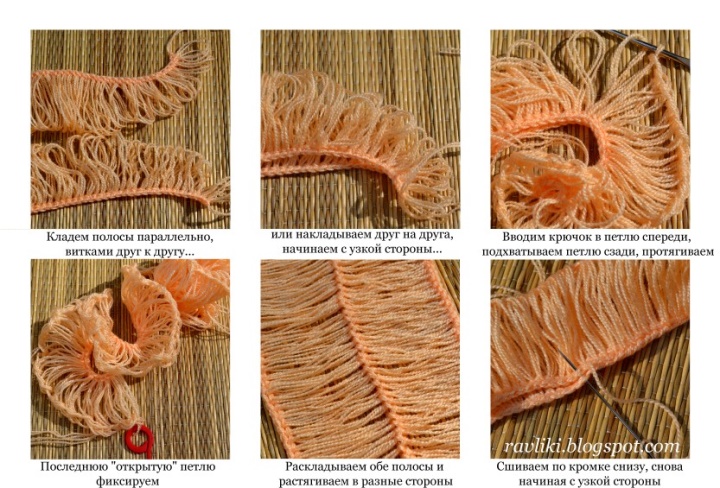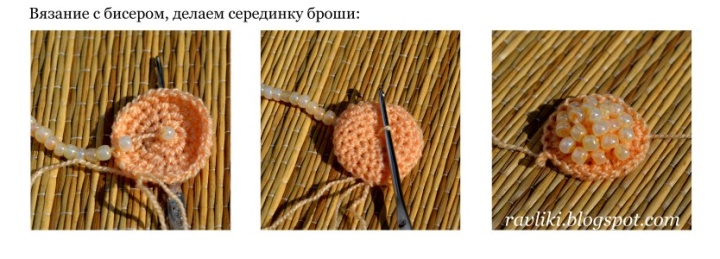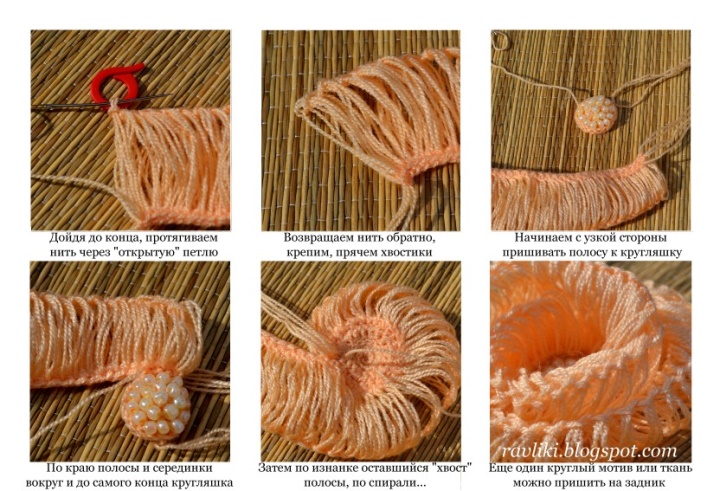Linking over a dozen experimental models, I came to the conclusion that with all the uncomplicated work, it was all about the yarn!
I can not give specific recommendations. I tried 3 types of cotton and beautifully laid down only Alize Bahar, looked not bad uneven and natural cotton with flax, I did not try wool and mohair, maybe on fluffy threads it will turn out very interesting. Beautifully fall "falling" thread: viscose and bamboo. In the photo - acrylic Kartopu Kristal. This yarn, consisting of two threads, I think one of the best for knitting on a fork. It is light and voluminous.
Hook number 1.75-2, sliding forks, but the bands knit by 4 cm. Let's proceed? :)
Knit not necessarily on the fork, you can take a ruler or any other flat and comfortable piece. But on the plug it is much more convenient :) Everything is fixed with pictures, and below, in words, an explanation.

1. Make an air loop and attach it with a hook to the right side of the fork.
2. Circle the working thread around the plug from right to left, backwards from yourself.
3. We make a thread on the front of the hook on the hook, i.e. we enter it under the thread.
4. We pull up the working thread from behind, nothing sags! and grab it on the hook.
5. We draw under the front thread ( here is an annoying misunderstanding, did not take another step) , again pick up the working thread and knit everything that is on the hook . Repeat steps * 2-5 *
I knitted 50 turns for the "body" brooches. Then she moved the fork to a smaller size, lowered the cocking down and gradually narrowed the strip with 10 turns. Here it is important to monitor only that there are no sharp differences between the length of the coils, smoothly. And 5 more turns on the narrowest part. Link need 2 bands.

1-2. Remove the strip and put turns to each other. It is convenient for "looking", but not very convenient for "knitting". I fold the strips flat and hold them loose. Do as you prefer.
3. We begin to connect the strips from the narrow side: we insert the hook into the loop on one side, pick up the loop on the other side, pull it through the first. Here and there, in front and behind, connecting their joint to the joint.
4. The last loop is “free”, there is nothing to do with it, so I temporarily put a marker on it so that the knitting does not spread out.
5. I straighten the bands, firmly pull in different directions so that the connection is leveled. In addition, it is a good idea to go through the ferry, this is a very “unruly connection” :) It always tries to fluff again. Similarly, I connected the stripes on the dress , but since the dress is "hanging", the stripes are pulled down under the weight of each other.
6. Now we connect the strips from below, along the edge, with a needle, starting from the narrow side.
While our fork is steaming and resting, knit the middle:

It is a circle with crochet and beads embroidered with crochets. Go to the assembly:

1. With the tail that remained with us from stitching, I fix the “free” last loop. I insert a needle with a thread into the tail and return it back to the hem.
2. I stretch the thread so that its length is equal to the length of the other turns.
3. Kruglyashok and the collected strips together ...
4. I start to sew from the narrow side a strip to the middle in a circle.
5. After the middle part has been completely sheathed, I turn the inside out to face me and continue to sew along the edges of the remnant strip to the already sewn to the round strip.